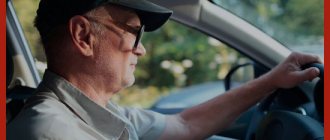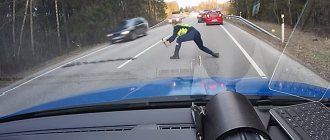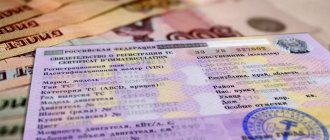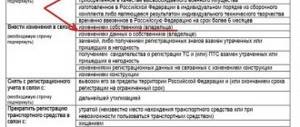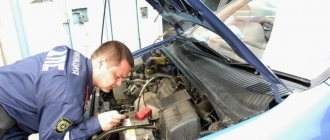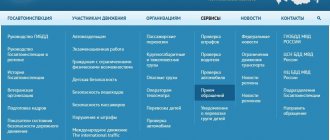What it is
The traffic police post is located in a certain territory and is responsible for it. Vehicles, any non-permanent structures or bushes are not permanent posts.
The term “stationary” itself means not movable. Some people are mistaken in thinking that if a traffic police car is parked on the side of the road, then there is a post in front of them. In such a situation, the post is considered traveling. Typically, a stationary post is located on highways near intersections, in the area of cargo-absorbing points, or near border crossings. As a rule, permanent traffic police posts are located not far from them.
The traffic police post operates 24 hours a day. The Ministry of Internal Affairs has lifted the ban on stopping cars other than at stationary traffic police posts.
What is a stationary traffic police post?
In 2021, the definition of a stationary post is: “This is a non-movable checkpoint, which is equipped with special office premises and equipped with operational and technical means.”
The traffic police post is located on a certain area of the terrain for which it is responsible. Cars, temporary buildings, and roadside bushes do not qualify as permanent posts.
The word “stationary” itself means not mobile. Many people mistakenly believe that a traffic police car parked at the side of the road is a stationary traffic police post. This is wrong. In this case, the post is traveling.
Stationary posts are located on highways in the areas of cargo-generating points, border crossings and intersections. Usually there is a permanent traffic police post not far from them. The traffic police post operates around the clock.
For what reasons can a car be stopped?
All possible reasons for stopping a vehicle are described in Order 185 of the Ministry of Internal Affairs of the Russian Federation. These include:
- violation of traffic rules, which the traffic police officer identified visually or using special devices;
- there is information that the driver or passenger is involved in administrative and legal violations, traffic accidents or a crime;
- the car is used for illegal purposes or is wanted;
- to testify if the driver witnessed the accident;
- when carrying out raids that are associated with the transportation of prohibited goods (only on the basis of existing orders);
- performing regulatory actions;
- if there is a need to provide assistance in an accident;
- if necessary, provide a car to medical workers or traffic police officers;
- if necessary, ask the driver to be an witness.
Checking documents at stationary traffic police posts
The main responsibility of a traffic police officer is to ensure constant, safe and unimpeded traffic. At a stationary post, the inspector has broader powers in relation to motorists.
If the driver has not violated any rules, then the reason for the stop may be a simple document check.
Previously, document verification could only be carried out at stationary posts. However, since July 2021, it has become known that the ban on stopping cars outside these posts has been lifted.
That is, this means that now even field posts can stop a motorist to check documents. This rule was included in the new Administrative Regulations, which came into force on October 20, 2021.
According to clause 6.5.2 of the Manual on the work of the traffic police of the State Traffic Safety Inspectorate of the Ministry of Internal Affairs, an employee while on duty has the right to:
- Check the identification documents of persons driving vehicles (licence, passport, car documents) if there is any evidence to suspect them of committing an offense.
- Carry out a personal search, search of luggage, belongings and hand luggage if there is information that a person has weapons or ammunition with him. If there are no special permits for carrying and storing these things, then the inspector is obliged to seize prohibited means, objects and substances.
Reasons why a vehicle may be stopped
In order to check the driver’s documents, the traffic police inspector relies on the grounds specified in the order of the Ministry of Internal Affairs of the Russian Federation number 185:
- there is information that the passenger or the driver himself is involved in transport accidents, any administrative violations or crimes;
- if necessary, provide your car to police or medical personnel;
- performing regulatory actions;
- the vehicle is wanted or has been used for illegal purposes;
- in the case where the driver or passenger is a witness to the accident, to take evidence from him;
- violation of traffic rules (if traffic police officers saw it or recorded it using special devices;
- during raids related to the transportation of various prohibited goods (based on the current law);
- if assistance is required in the event of an accident;
- if the driver of the car is asked to become a witness;
- orientation towards the driver or car;
- for regulatory actions (when all machines need to be stopped),
- to ensure the passage of a column with special signals,
- when there is a need to help others,
- if the vehicle is malfunctioning and creates a threat to traffic safety,
As you can see, in the definition of “stationary post” the section on checking documents at stationary posts was removed. Therefore, traffic police inspectors have every right to stop a vehicle to check the driver’s documents anywhere. But only if he has reasons for this check (and not to stop), which are listed above.
Order of the Ministry of Internal Affairs of the Russian Federation No. 185 on the Approval of the Administrative Regulations of the Ministry of Internal Affairs of the Russian Federation has existed for 8 years. This Administrative Regulation contains the rules and regulations for the relationship between a traffic police officer and drivers and pedestrians. The norms laid down in the regulations must be strictly followed.
Each of us, if not a driver, then a pedestrian, it is useful for all of us to know our rights and responsibilities in this status. Then, when meeting with a traffic police inspector, it is possible to eliminate misunderstandings and unreasonable conflict situations that arise precisely because drivers (pedestrians) are unaware of the rights of the inspector.
So, what does the traffic police inspector have the right to present to the driver in accordance with the points enshrined in Order No. 185?
Execution of public functions by a traffic police officer
31. The performance of a government function may include the following administrative procedures:
- traffic control;
- traffic control using special technical means operating in automatic mode;
- traffic regulation;
- stopping a vehicle;
- pedestrian stop;
- checking the identification number, body number, chassis, engine of the vehicle, documents, state registration plates, technical condition of the vehicle;
- drawing up a decree-receipt imposing an administrative fine;
- interviewing the person against whom proceedings are being conducted for an administrative offense, the victim and the witness;
- drawing up a protocol on an administrative offense;
- making a decision in a case of an administrative offense;
- suspension from driving;
- examination for alcohol intoxication;
- referral for a medical examination for intoxication;
- confiscation of a driver's license;
- prohibition of operating a vehicle;
- detention of a vehicle;
- inspection of the vehicle and cargo;
- vehicle inspection;
- personal search, search of things carried by an individual;
- seizure of things and documents;
- seizure of things;
- delivery;
- administrative detention;
- issuing a ruling to initiate a case of an administrative offense;
- issuing a ruling to refuse to initiate proceedings regarding an administrative offense;
- going to the scene of a traffic accident;
- drawing up a protocol for the inspection of the place where the administrative offense was committed.
31. The performance of government functions includes the following administrative procedures:
- traffic control;
- traffic control using special technical means operating in automatic mode that have the functions of photographing, filming, video recording, or means of photographing, filming, and video recording 1; 1 Hereinafter referred to as “automatic fixation means.”
- traffic regulation;
- stopping a vehicle;
- pedestrian stop;
- checking the identification number, body number, chassis, engine of the vehicle, documents, state registration plates, technical condition of the vehicle;
- interviewing the person against whom proceedings are being conducted for an administrative offense, the victim and the witness;
- drawing up a protocol on an administrative offense;
- making a decision in a case of an administrative offense;
- suspension from driving;
- examination for alcohol intoxication;
- referral for a medical examination for intoxication;
- confiscation of a driver's license;
- prohibition of operating a vehicle;
- detention of a vehicle;
- inspection of the vehicle and cargo;
- vehicle inspection;
- personal search, search of things carried by an individual;
- seizure of things and documents;
- seizure of things;
- delivery;
- administrative detention, detention;
- issuing a ruling to initiate a case of an administrative offense and conduct an administrative investigation;
- issuing a ruling to refuse to initiate proceedings regarding an administrative offense;
- going to the scene of a traffic accident;
- drawing up a protocol for the inspection of the place where the administrative offense was committed.
Several changes have been made to this paragraph, so I propose to consider them in order:
1. Use of automatic fixation means. The changes here are quite significant.
Previously, traffic police officers could use any automatic means of recording violations, but now these means must be equipped with photo, film, and video recording functions.
What does this change mean for the average driver? It's quite simple. If, for example, you receive information by registered mail that you have exceeded the speed limit, but the traffic police device does not take a photo or video of your car, then the fine can be contested with the traffic police or in court.
2. The clause that allowed traffic police officers to draw up receipt orders has been excluded. In practice, receipt orders have not been used for quite a long time, so this change brought the administrative regulations into line with modern realities.
3. One more change. In addition to administrative detention, traffic police officers can now carry out simple detention. This procedure is described in detail in Article 14 of the Federal Law “On Police”.
Verification of documents
The administrative regulations of the State Traffic Safety Inspectorate include a list of actions required to be performed by employees of the Russian Road Inspectorate in order to ensure the safety of all road users. The inspector has the right to perform his duties both at a stationary and mobile post.
IMPORTANT! Now the inspector has the right to carry out document checks at posts of any type. Until October 2021, this could only be done at stationary posts.
The list of powers of a State Traffic Inspectorate employee includes:
- Checking that the car owner has documents for the car and a driver’s license if there is a suspicion of a possible offense.
- Checking luggage, personal belongings and personal search upon receipt of information about the transportation of weapons, ammunition, and narcotic substances in this vehicle. If a weapon (other prohibited substances) is detected, permission to carry which has not been provided, the weapon or other prohibited items are confiscated by the employee.
The responsibilities of an employee when stopping a vehicle are as follows:
- Introduction, giving greetings in the form, communication of rank and surname.
- A clear and clear indication of the reason for stopping the vehicle. If the reason is not given, the driver has the right to ask about it.
- Presentation of a police officer's identification. It is strictly prohibited to transfer it into the hands of another person.
- The explanation with the driver is polite, only in “you”.
- Careful handling of documents received from the driver. If they contain banknotes, you should return the documents to the driver and ask them to hand over the documents again without banknotes.
Don't stand at your post
At the beginning of the year, the police leadership in the Southern Urals analyzed the work of the guards and recognized it as ineffective. At some traffic police posts not a single protocol is drawn up per day. What then do the police do? Do they take bribes?
Only four stationary traffic police posts remained operational in the entire region. All of them are located in Chelyabinsk - at the entrances to the city from Troitsk, Ufa, Yekaterinburg and Kurgan. The largest flow of transit transport passes through them, requiring increased attention from law enforcement agencies. In addition, these posts are equipped with automatic tracking and license plate recognition equipment, which makes it possible to identify stolen vehicles.
The remaining posts in Chelyabinsk, Magnitogorsk and Yuryuzan have been mothballed as unnecessary.
According to the deputy head of the regional traffic police, Maxim Kuleshov, stationary police posts that were once created to combat thefts have lost their relevance. The hijackers simply bypass them. There are no traffic violations near them either - there are no crazy people. And maintenance is not cheap. For example, the federal traffic police post in Yuryuzan was served by a staff of 30 police officers. There is a post at the dam across the Shershnevskoye Reservoir in Chelyabinsk - four to six policemen every day. Moreover, due to the lack of accidents in this area, they often performed the work of local police officers. Now the freed-up traffic police officers will get into cars to patrol the roads, and the station will be handed over to the local police officers, so that everyone can do their own thing.
Mikhail Pincus
comment
The idea of abolishing stationary traffic police posts on the roads was recently announced by the country's former chief traffic inspector, and now senator, Vladimir Fedorov. Here's how he argues for the need for such a radical approach.
Few people other than professionals remember that at one time stationary posts were organized to fight crime. That is, with car thefts and the capture of fugitive criminals. And the placement of posts corresponded to these goals - on the right side of the road at the exits from the region or city. Later, some of the stationary posts were transformed into KPM - police control posts.
Traffic police patrols should be located in areas of greatest accident risk. And the traffic police know such areas very well in their regions. Of course, there are situations when patrols alone cannot ensure an accident-free environment. For example, when there is no normal road as a fact. In this case, patrols will not help the matter; engineering services must be involved.
And another sensible thought was expressed by the senator. With the current level of motorization, smart technology and devices in the hands of drivers, standing at posts to control the flow is becoming a completely pointless activity.
As the Department of Road Safety informed us, systematic work has been underway for several years to reduce the number of traffic police posts. In today's realities they turned out to be ineffective.
Natalia Kozlova
what about them
Belgium
In the country, police officers are almost invisible on the roads, be it wide highways or provincial highways. But in the event of an accident or any emergency situation on the roadway, they appear very quickly. And the whole brigade. While some are dealing with the consequences of the accident, others are organizing traffic so that there is no traffic jam. And still others put up special signs several kilometers from the accident to warn other drivers.
High efficiency and effectiveness of the traffic police is achieved through the use of a set of measures and various technical means. The general situation on the roads is monitored by video cameras, which are equipped on almost all major highways. In each region, the traffic police have their own control center, which receives signals from all cameras. In addition, the traffic police systematically patrol the area under their control. However, a more effective means of combating violators on the roads is hidden patrolling, carried out by police officers in cars without police livery. Their responsibilities include only recording traffic violations, and not stopping violators with subsequent proceedings.
Bulgaria
Stationary traffic police posts are very rare in Bulgaria. They are mainly located at the entrances to large cities. Although before they almost dazzled the eyes. However, local police now prefer to use mobile patrols, hidden patrol vehicles and video cameras. There are also “ambushes” familiar to Russians on Bulgarian roads. However, in such cases, as a rule, a kilometer before this place there is a sign warning about a possible speed check by the police.
In the event of a car breakdown on the road, a Bulgarian driver only needs to dial one of two phone numbers. And the road assistance service will come to his rescue. True, this service is paid. Police presence is not required to report minor accidents.
Germany
You won't see police boxes in Germany. You can race along the autobahn without any speed limit. True, not everywhere. Near populated areas or on dangerous sections of the road, speed is limited. Only on autobahns there are special traffic police. Its points are located evenly along all highways. So, in the event of an accident or car breakdown, the driver can dial 001, and in at most a quarter of an hour a police car will arrive, fence off the dangerous area, help and sort it out.
If the driver forgot his phone at home, it doesn’t matter. On the highways there are small posts with telephones for urgent notification of the police. In case of breakdowns on the roads or damage to cars in accidents, the service of the General German Drivers Club is also quick to help. Within populated areas and on federal roads, the regular police are responsible. There is no stationary monitoring of roads using video cameras in Germany. They are used only in some localities to monitor and regulate traffic jams. To identify violators, the German police use four methods - stationary radar installations, mobile radars, “laser pistols” and pursuit of the violator.
Prepared by Anna Rose (Berlin), Dmitry Kosarev (Brussels), Vladimir Kuzmin (Sofia).
The need to inform the driver about a special event
Having informed the driver about the reason for the stop - a special event - the inspector is not required to present a document confirming its implementation. If the driver insists on familiarizing himself with such an order, he has the right to go to the nearest police station and familiarize himself with the order there. The state traffic inspector has no right to interfere with such actions of the driver.
ATTENTION! Remember this clause of the regulations and exercise your right legally. If an inspector asks to present documents or carry out a search of luggage and cites a special event as the reason for such actions, the driver has the right not to carry out the inspector’s order, but to go to the police department and get acquainted with the order to carry it out.
In the video about changes in the law on communication with traffic police
There are no plans to cancel permanent posts at this time. Such posts are located on highways, operate around the clock, have identification signs and special technical equipment.
What should a traffic police officer do when stopping a car?
The entire list of actions that an employee is required to perform when checking traffic police documents outside or at a stationary post is indicated in Order No. 297 of the Ministry of Internal Affairs. Main responsibilities:
- Introduce yourself indicating your rank and surname;
- Say why the car was stopped;
- Be polite and calm;
- Depending on the reason for the stop and the behavior of the driver, further responsibilities vary significantly. This may include checking documents, searching the car, and even detaining the driver if he breaks the law.
Now there is a lot of talk about the abolition of stationary traffic police posts, but this has not been officially confirmed. There are a small number of such posts, which can be seen on the map of stationary traffic police posts. And they perform their functions only on certain sections of roads.

